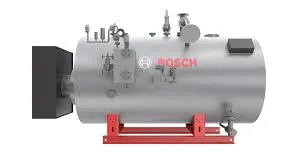
Dec . 05, 2024 11:42 Back to list
steam boiler material
The Importance of Material Selection in Steam Boilers
Steam boilers play a crucial role in various industrial processes by converting water into steam through the application of heat. This steam can be used for heating purposes, power generation, or as a driving force for machinery. However, the efficiency and safety of steam boilers heavily depend on the materials used in their construction. Therefore, understanding the significance of material selection in steam boilers is essential for achieving optimal performance and longevity.
Factors Influencing Material Selection
The Importance of Material Selection in Steam Boilers
2. Corrosion Resistance Corrosion is a significant concern in boiler systems since water is constantly in contact with metal surfaces. Factors such as pH levels, presence of impurities, and temperature can all influence the rate of corrosion. Materials that are resistant to corrosion, such as stainless steels and certain alloys like Inconel or Hastelloy, are often selected for components that will be exposed to harsh conditions. These materials help extend the lifespan of the boiler and reduce maintenance costs over time.
steam boiler material

3. Thermal Conductivity The efficiency of heat transfer within a steam boiler is influenced by the thermal conductivity of its materials. For instance, copper has excellent thermal conductivity and is sometimes used in heat exchangers. However, due to its cost and susceptibility to corrosion, it is less commonly used in boiler shells. In contrast, carbon steel is favored for its balance between cost-effectiveness and adequate thermal conductivity, making it suitable for most structural applications in steam boilers.
4. Weldability The ability to join different materials using welding is crucial in boiler construction. Many components require complex welding procedures, and materials that are easy to weld can lead to more efficient manufacturing processes. Stainless steels and certain low-alloy steels have favorable welding characteristics, making them popular choices in modern boiler design.
5. Cost and Availability While performance and safety are paramount, economic factors also play a vital role in material selection. The cost of materials and their availability can influence decisions, particularly for large-scale projects. Designers often seek a balance between high-performance materials and cost-effective alternatives, ensuring that the steam boiler remains economically viable.
Conclusion
In conclusion, the selection of materials for steam boilers is a multifaceted process that requires careful consideration of various factors such as temperature, pressure, corrosion resistance, thermal conductivity, weldability, and economic factors. The proper choice of materials can enhance the boiler’s efficiency, performance, and lifespan while ensuring safety and reliability during operation. As industries continue to evolve and demand for more efficient boiler systems rises, ongoing research and development in materials science will likely lead to innovative solutions that further enhance steam boiler technology. Selecting the right materials is not just a technical necessity; it is a critical component that can significantly impact energy efficiency, operational costs, and environmental sustainability in steam production processes. Thus, staying informed about advancements in boiler materials and technologies is essential for engineers and decision-makers in the industry.
-
High-Efficiency Commercial Oil Fired Steam Boiler for Industry
NewsJul.30,2025
-
High-Efficiency Biomass Fired Thermal Oil Boiler Solutions
NewsJul.30,2025
-
High Efficiency Gas Fired Thermal Oil Boiler for Industrial Heating
NewsJul.29,2025
-
High-Efficiency Gas Fired Hot Water Boiler for Sale – Reliable & Affordable
NewsJul.29,2025
-
High Efficiency Biomass Fired Hot Water Boiler for Industrial and Commercial Use
NewsJul.29,2025
-
High-Efficiency Biomass Fired Hot Water Boiler for Industrial Use
NewsJul.28,2025
Related PRODUCTS






















